

Rhodes
a Greek Island
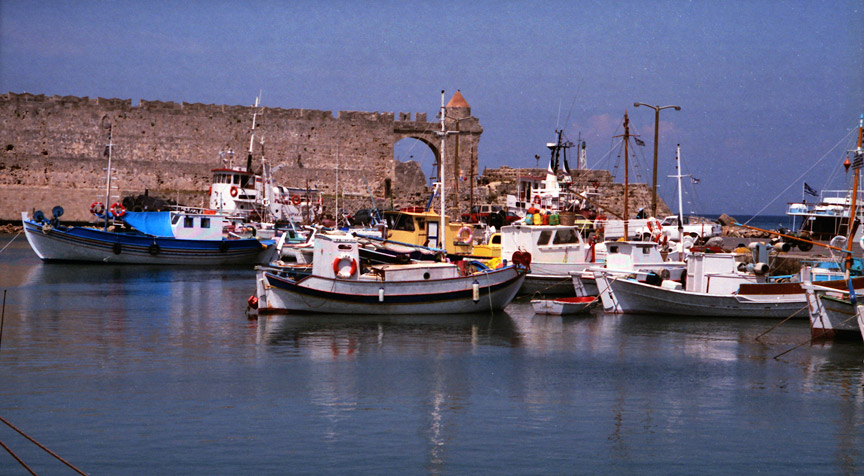
Rhodes harbor
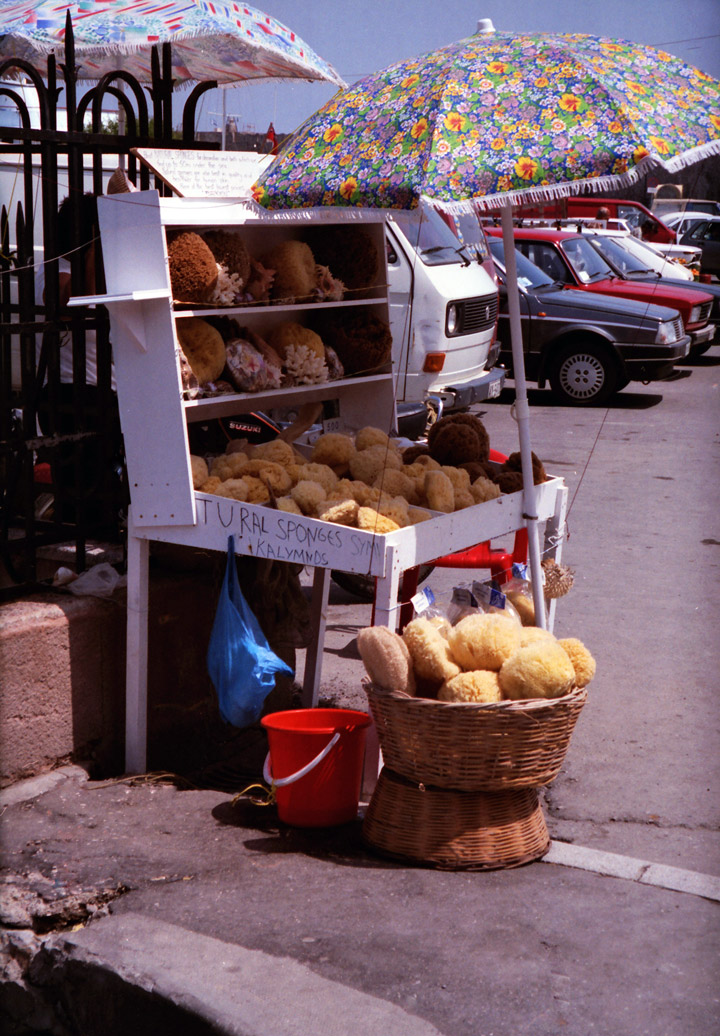
sponges
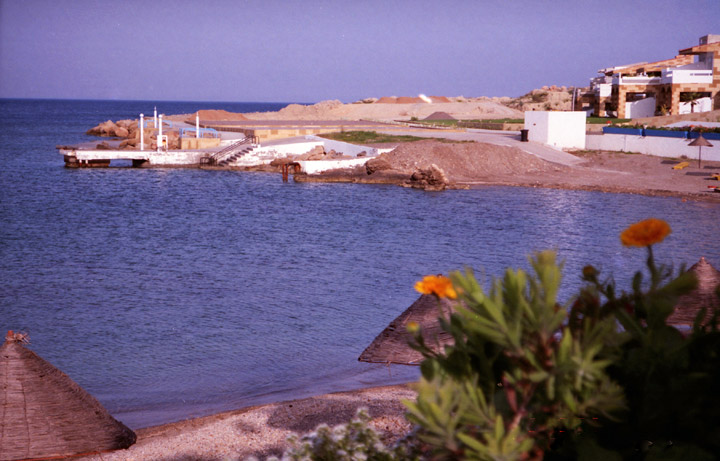
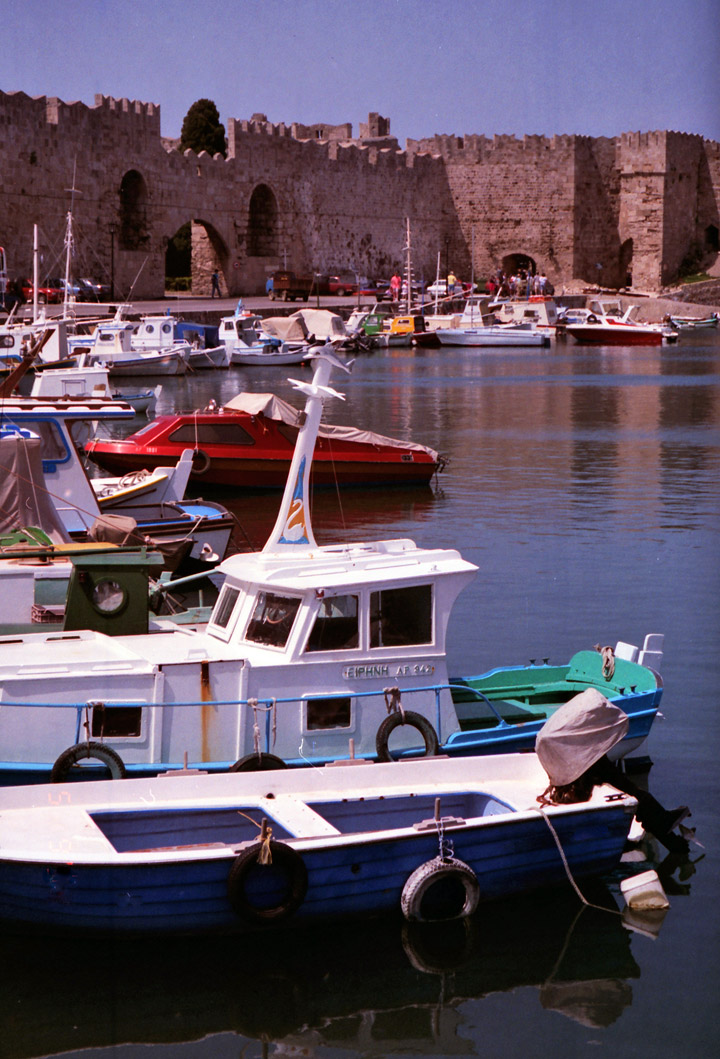
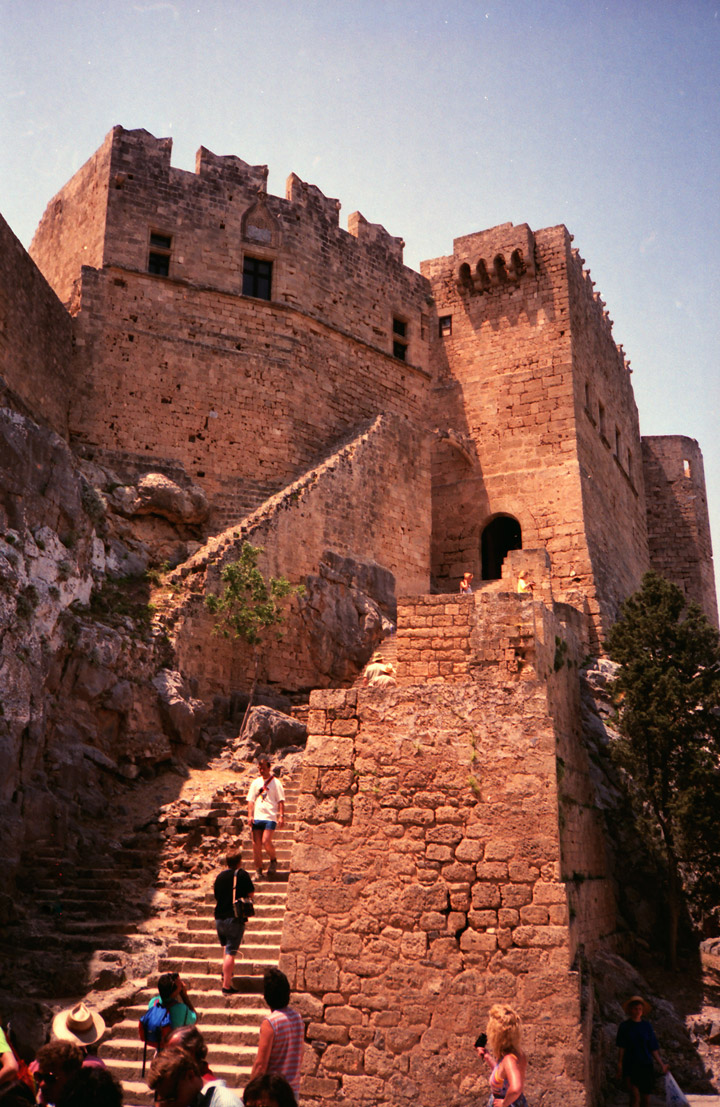

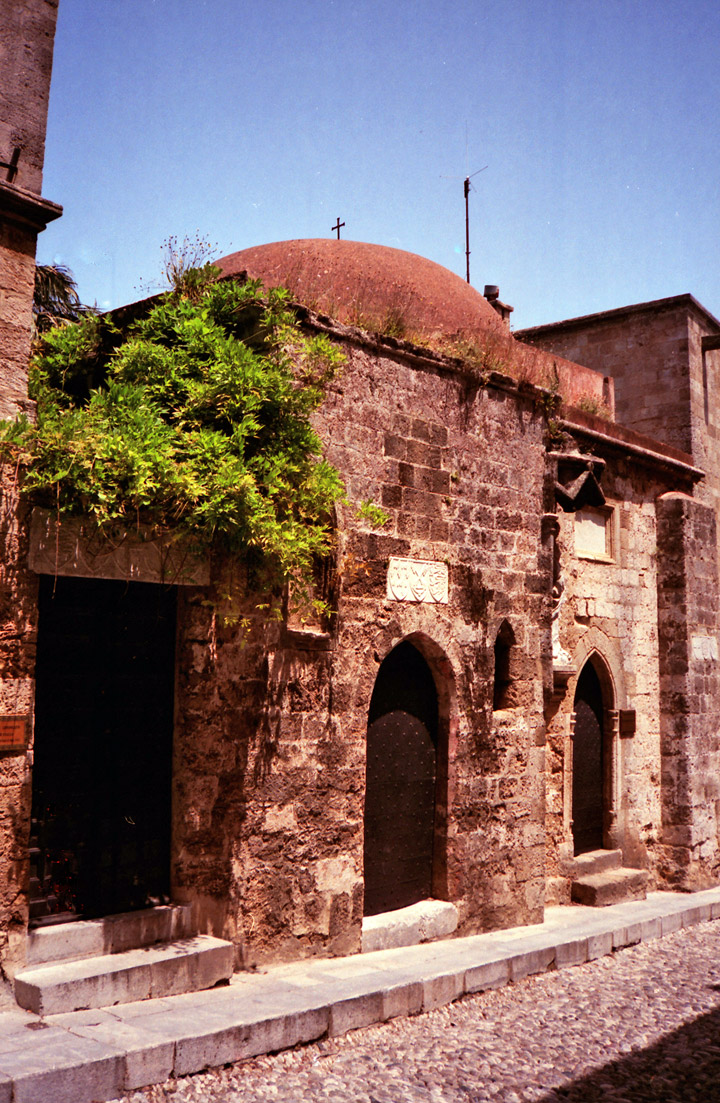
Rhodes (city, Greece) (Greek Ródhos), city, southeastern Greece, at the northeastern extremity of the island of Rhodes, capital of the department (nome) of the Dodecanese, on the Aegean Sea, near Turkey. The city is a port and a trading center for agricultural products; manufactures include carpets, brandy, cigarettes, and soap.
Near the important southern harbor is the old walled city, which was built mainly in the early 14th century by the Knights of Saint John of Jerusalem.
Notable buildings in the old section include the Grand Hospital of the Knights and the Palace of the Grand Masters. The modern section, near the smaller northern harbor, contains government buildings, hotels, and a national theater.
The present city is located near the site of the ancient city of Rhodes, which was founded in 408BC. Population (1981 preliminary) 40,656.
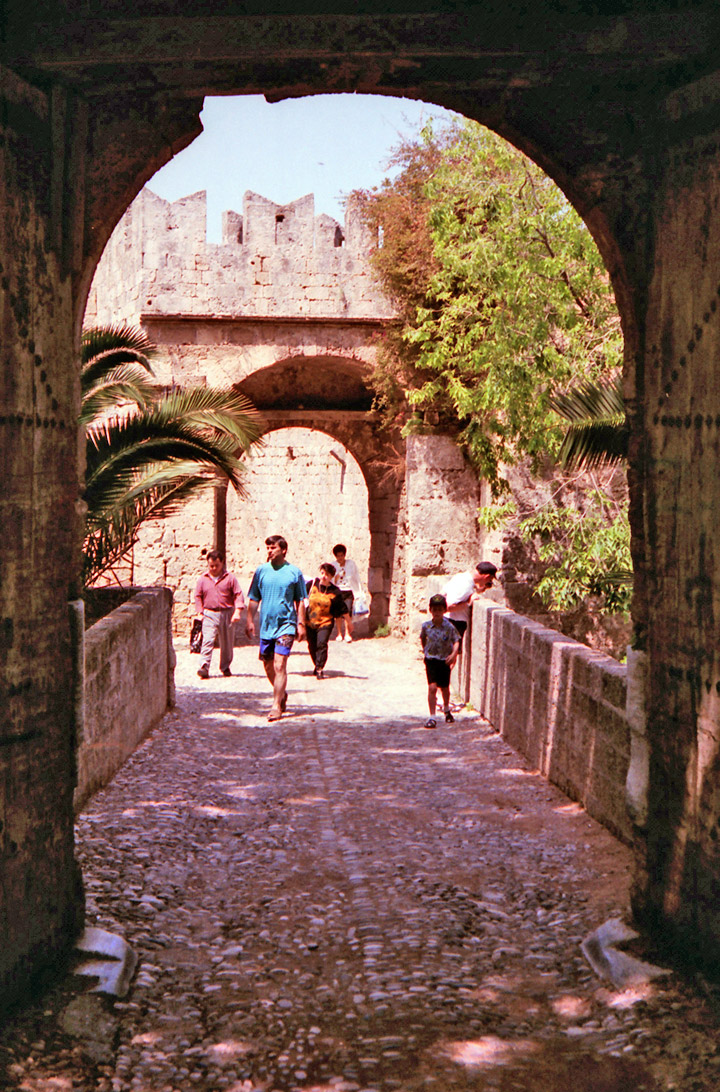
Rhodes (island, Greece) (ancient Rhodus or Rhodos; modern Greek Ródhos), island, southeastern Greece, in the Aegean Sea, near Turkey, grouped for administrative purposes with the Dodecanese Islands. The island has a maximum length, from northeast to southwest, of about 72 km (about 45 mi); its maximum width is about 35 km (about 22 mi). A longitudinal mountain range traverses the central portion of the island. Atáviros, the highest peak, is about 1220 m (about 4000 ft) above sea level. In the region between the sea and the central range the terrain is generally hilly, with numerous gently sloping valleys. Rhodes has a healthful climate and is noted for its fertile soil. Among the leading crops produced on the island are cotton, fruit, grain, sponges, and tobacco. The chief community on the island is Rhodes, the administrative center of the Dodecanese Islands.
Archaeological discoveries indicate that Rhodes figured prominently in the Aegean civilization of ancient times. In the 2nd millennium BC, when the island first appears in history, it was inhabited by the Dorians, and its chief towns were Camirus, Lindus, and Ialysus.
These towns were flourishing commercial centers with colonies scattered throughout the Aegean basin. For many centuries the history of the island is obscure, but the three cities are recorded as members, in the 5th century BC, of the Delian League, a confederacy of Greek states under the leadership of Athens. The three cities broke with Athens in 412BC. In 408BC the city of Rhodes, constructed according to designs by the Greek architect Hippodamus of Miletus, was completed. Throughout most of the following century, the island was involved in the internecine wars of Greece. In 332BC Rhodes submitted to the sovereignty of Alexander the Great. On the death of Alexander in 323BC the citizens of Rhodes revolted and expelled the Macedonians.
Rhodian prosperity and political power attained great heights during the 3rd and 2nd centuries BC. The city became a renowned cultural center, particularly noted for its plastic and pictorial art. Rhodian achievements in these fields found climactic expression in the paintings of Protogenes (flourished 4th century BC) and in the work of Chares (flourished 3rd century BC), creator of the celebrated Colossus (circa 280BC). In the 1st century BC Rhodian sculptors executed the famous Laocoön. The Rhodians were staunch allies of Rome during this period.
In 48BC they aided Julius Caesar in his struggle against the Roman general and statesman Pompey the Great and the Roman Senate. Another Roman general, Gaius Cassius Parmensis (flourished 1st century BC), one of the assassins of Caesar, invaded Rhodes in 42BC. He massacred the friends of Caesar, seized the public wealth, and rifled the temples. This attack broke the power of Rhodes, but the city long continued to maintain its prestige as a seat of learning.
a Gorgon (or Medusa)
shown with snakes in her hairUnder the Roman Empire Rhodes enjoyed a measure of nominal independence. In AD395, on the division of the Roman Empire, Rhodes was attached to the Byzantine Empire. It remained under Byzantine control until 1309, when it was occupied by the Knights of Saint John of Jerusalem.
mosque from Turkish period
In 1522, after a sanguinary Turkish siege led by Suleiman I, the knights were forced to evacuate the island. Turkish sovereignty over Rhodes lasted until the Turko-Italian War (1912), when it was taken by Italy. The island was ceded to Greece in 1947. Area, about 1400 sq km (about 540 sq mi); population (1981) 87,831.
Text from Microsoft Encarta
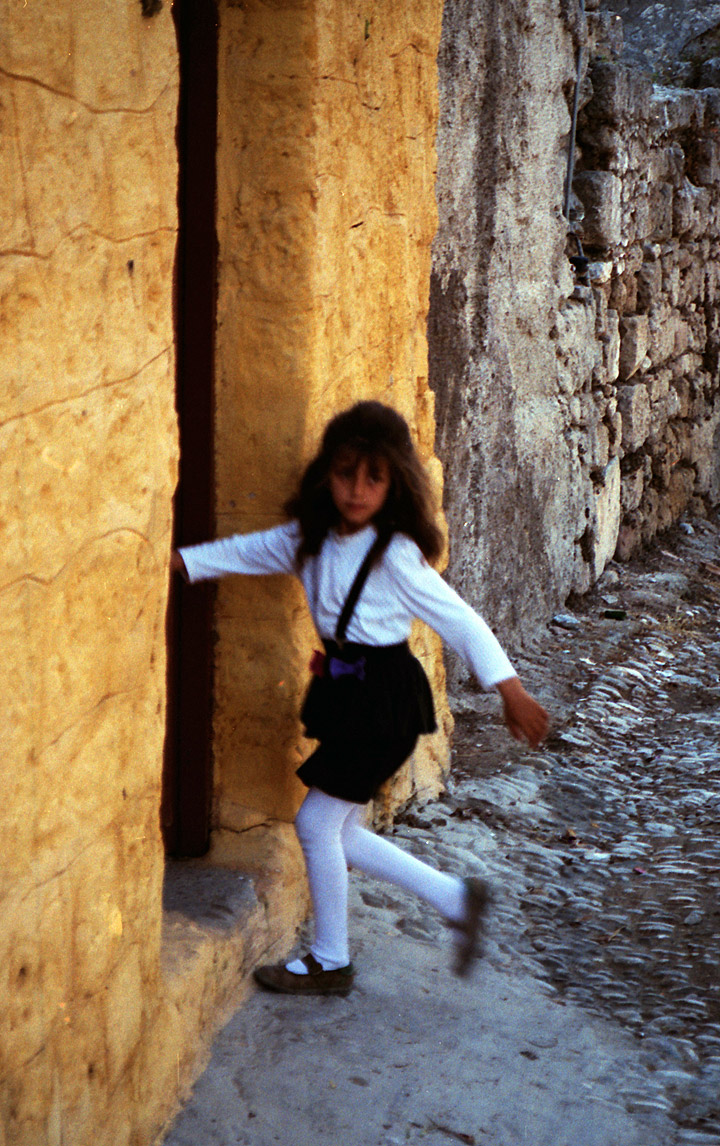
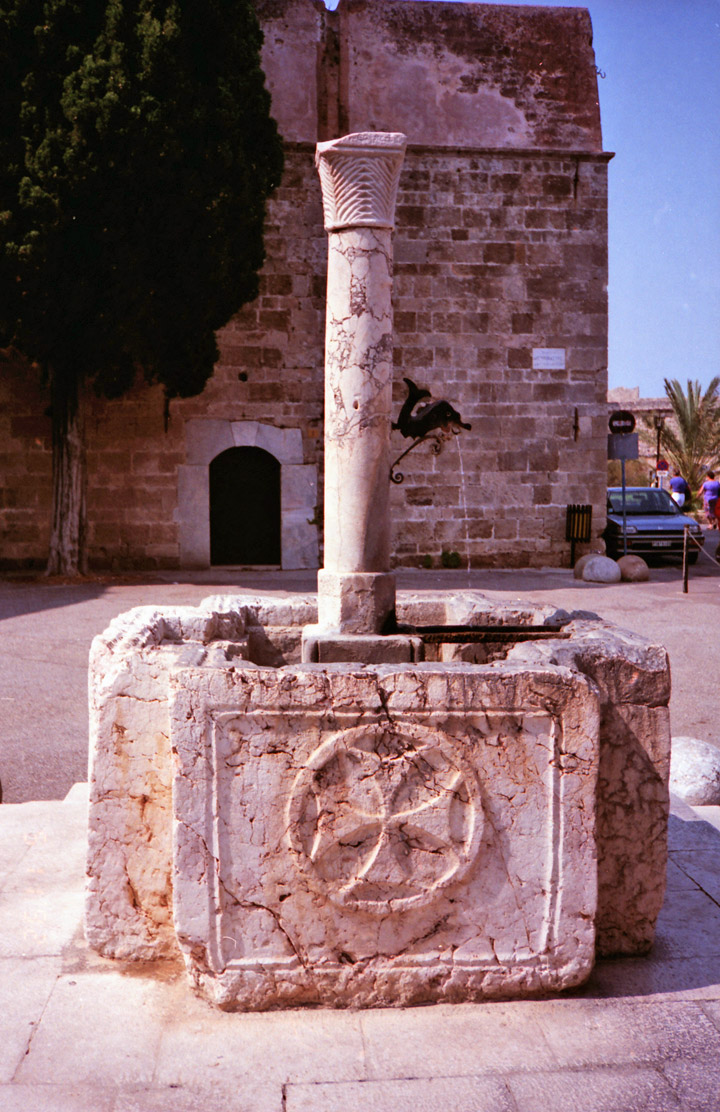
Byzantine fountain
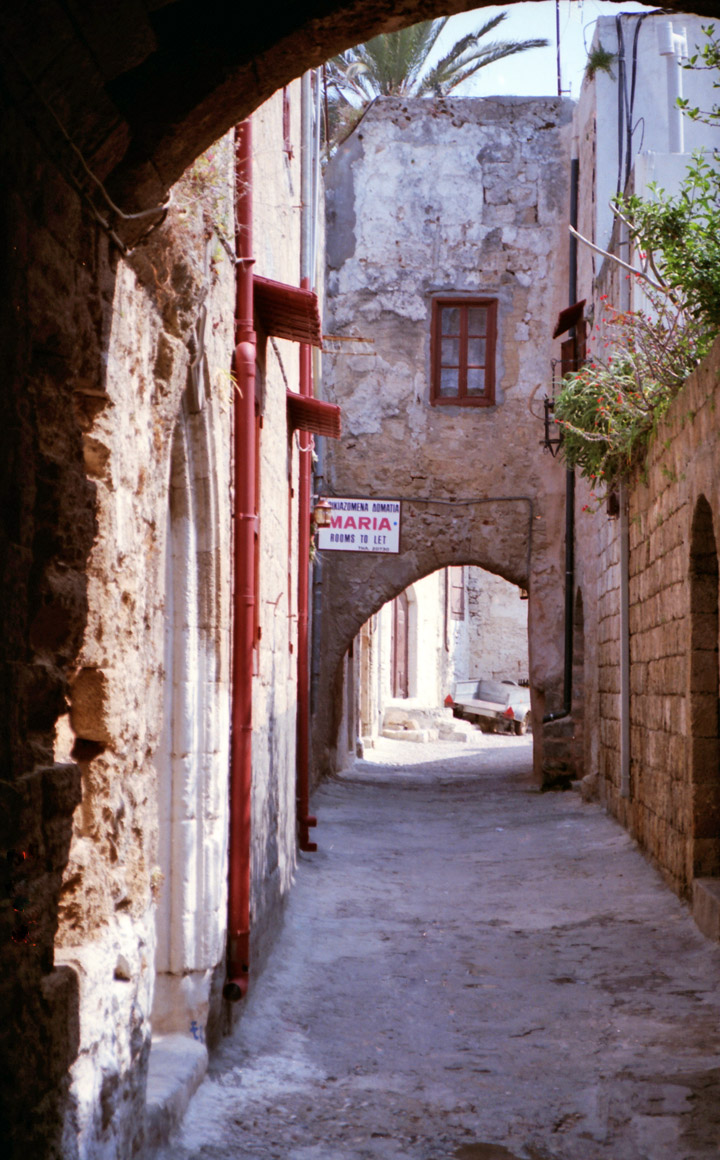
narrow streets
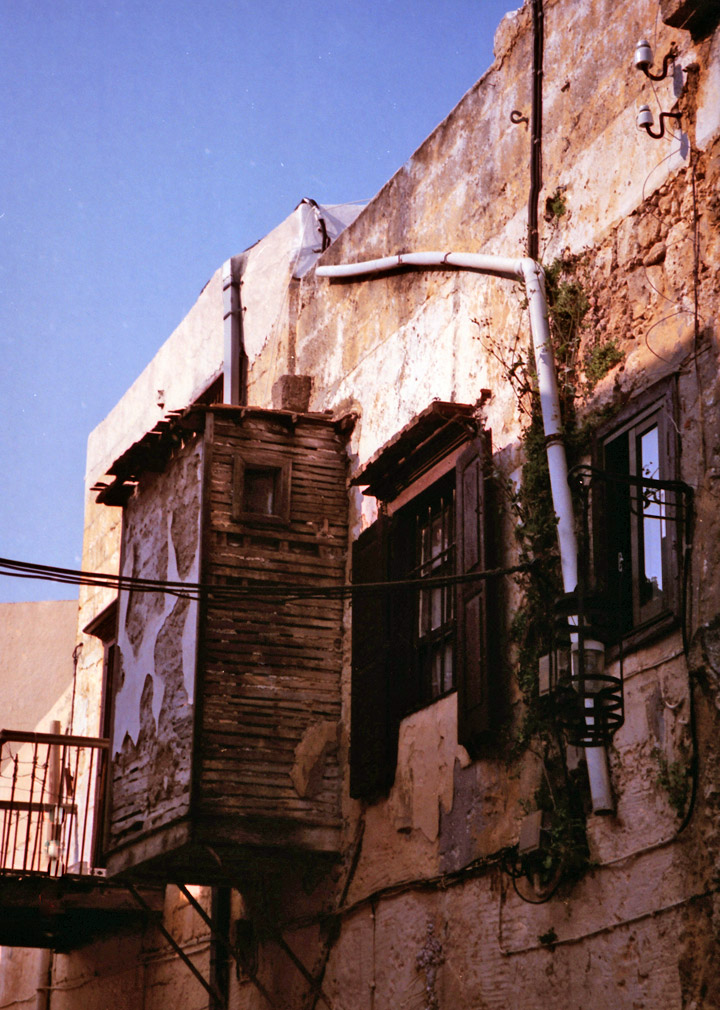
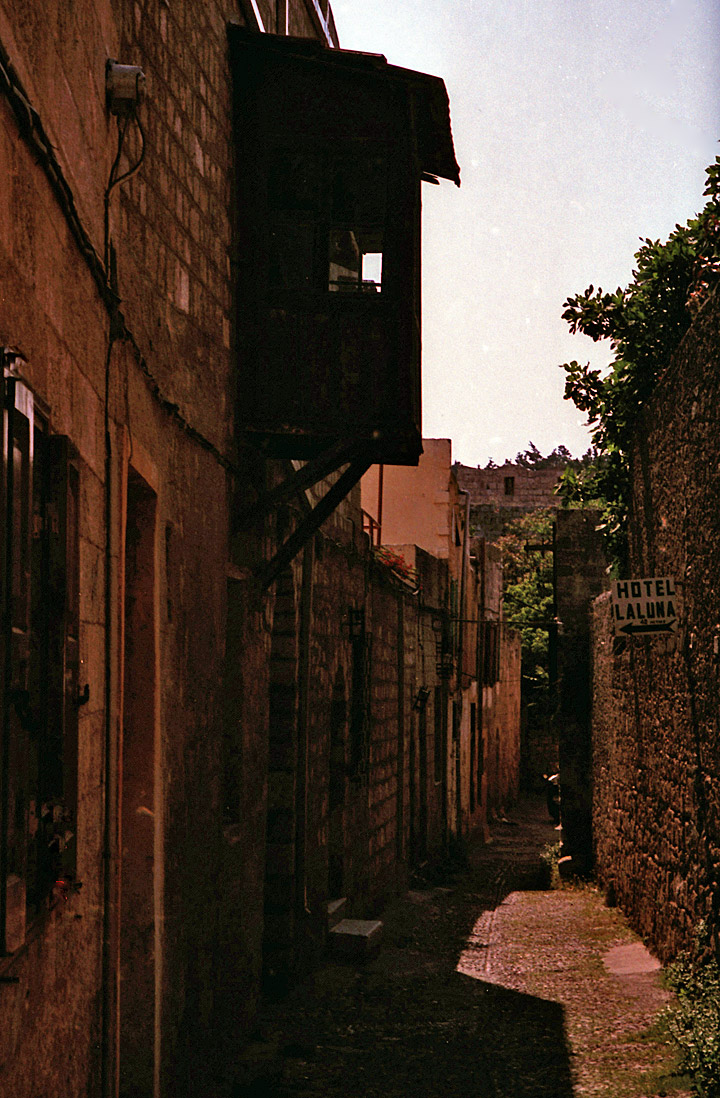

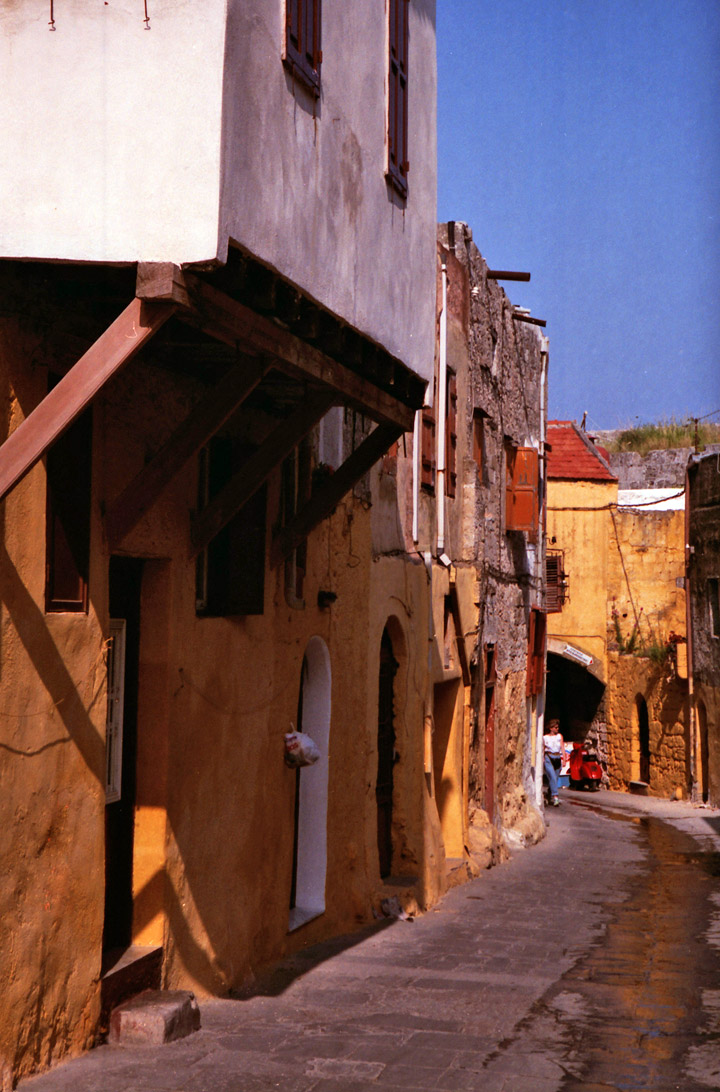
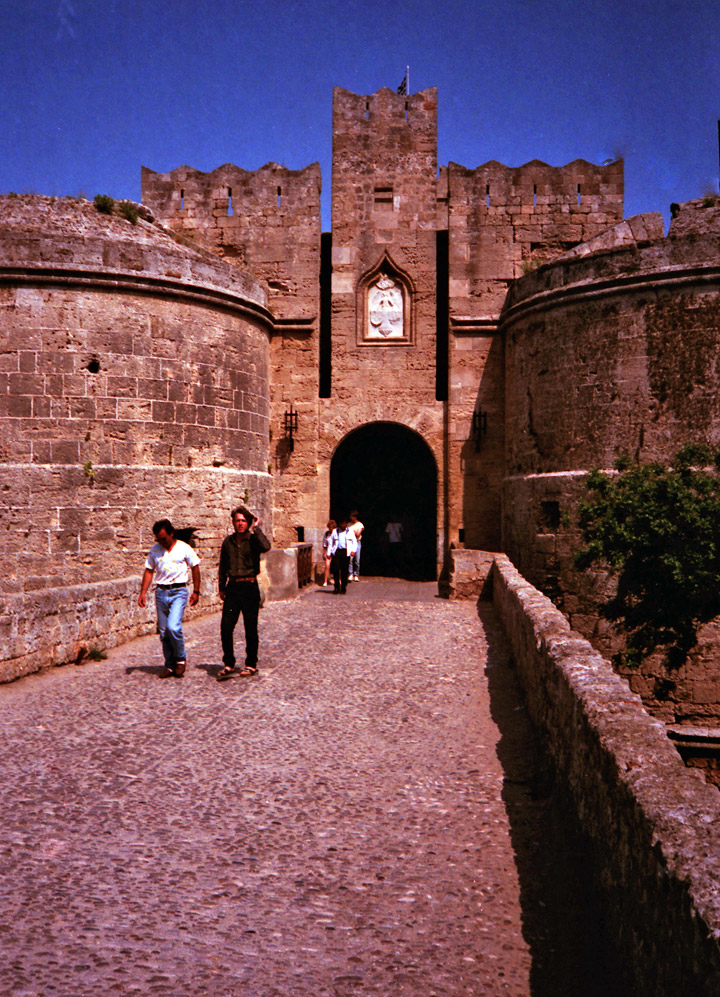
gate

minaret on the left
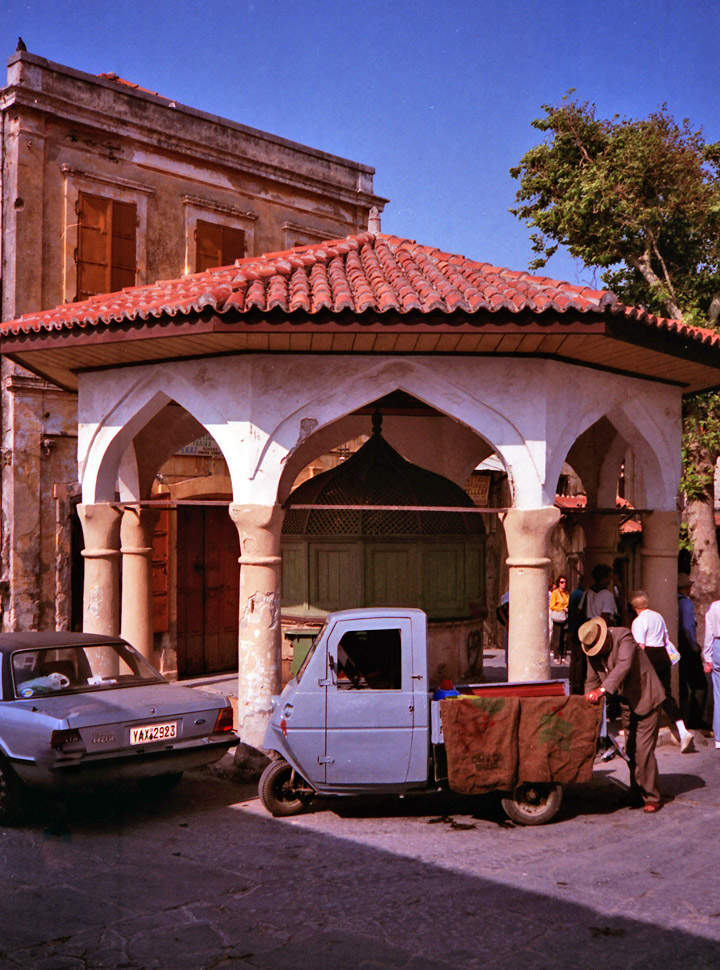
mosque fountain

shoes at the entrance
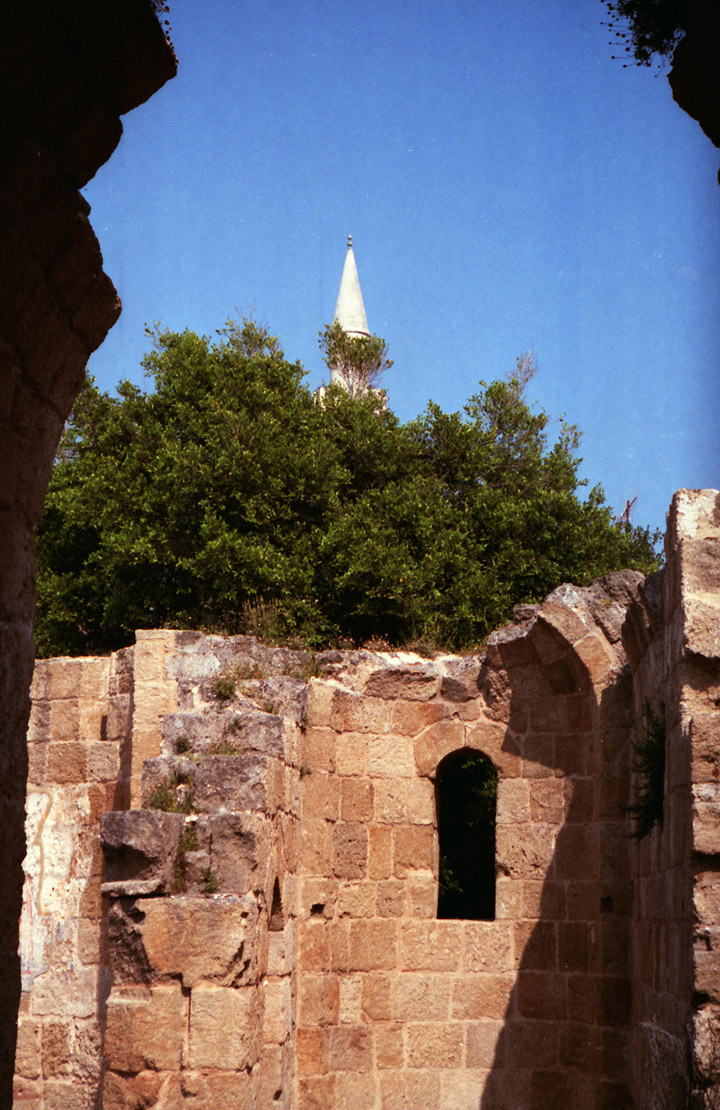



![]()
![]()
![]()